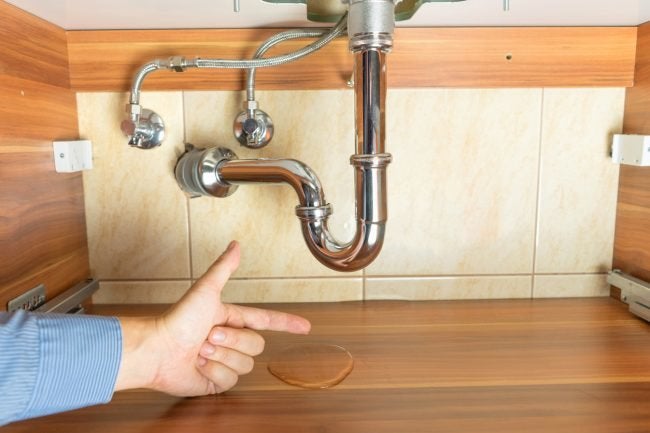Just how to Inspect If Your Residence Has a Concealed Leakage
Just how to Inspect If Your Residence Has a Concealed Leakage
Blog Article
We've found this great article relating to Locating water leaks listed below on the web and felt it made sense to discuss it with you on this page.

Early discovery of leaking water lines can minimize a prospective disaster. Some little water leaks might not be visible.
1. Check Out the Water Meter
Every home has a water meter. Examining it is a guaranteed manner in which assists you find leaks. For beginners, turn off all the water resources. Ensure nobody will flush, make use of the faucet, shower, run the cleaning device or dish washer. From there, go to the meter as well as watch if it will certainly alter. Since nobody is utilizing it, there ought to be no activities. If it moves, that suggests a fast-moving leakage. Likewise, if you discover no changes, wait a hr or two as well as check back once again. This suggests you may have a sluggish leakage that can also be underground.
2. Inspect Water Usage
If you identify unexpected adjustments, regardless of your intake being the very same, it indicates that you have leakages in your plumbing system. An unexpected spike in your costs shows a fast-moving leakage.
Meanwhile, a steady rise every month, despite having the very same behaviors, reveals you have a sluggish leak that's also slowly escalating. Call a plumber to extensively inspect your residential property, specifically if you feel a warm location on your floor with piping beneath.
3. Do a Food Coloring Test
30% comes from bathrooms when it comes to water consumption. Examination to see if they are running correctly. Drop flecks of food color in the tank and also wait 10 minutes. If the color somehow infiltrates your dish during that time without flushing, there's a leak in between the storage tank and dish.
4. Asses Outside Lines
Do not neglect to examine your outdoor water lines too. Ought to water seep out of the connection, you have a loosened rubber gasket. One little leak can lose lots of water and also spike your water expense.
5. Examine and Evaluate the Situation
Homeowners must make it a habit to check under the sink counters as well as also inside closets for any bad odor or mold growth. These two warnings indicate a leak so prompt attention is needed. Doing regular inspections, even bi-annually, can save you from a major issue.
Examine for stainings and weakening as many pipes as well as devices have a life span. If you believe dripping water lines in your plumbing system, don't wait for it to rise.
Early discovery of dripping water lines can minimize a possible disaster. Some tiny water leaks might not be visible. Inspecting it is a guaranteed way that assists you find leaks. One tiny leakage can lose heaps of water as well as spike your water costs.
If you presume leaking water lines in your plumbing system, do not wait for it to intensify.
WARNING SIGNS OF WATER LEAKAGE BEHIND THE WALL
PERSISTENT MUSTY ODORS
As water slowly drips from a leaky pipe inside the wall, flooring and sheetrock stay damp and develop an odor similar to wet cardboard. It generates a musty smell that can help you find hidden leaks.
MOLD IN UNUSUAL AREAS
Mold usually grows in wet areas like kitchens, baths and laundry rooms. If you spot the stuff on walls or baseboards in other rooms of the house, it’s a good indicator of undetected water leaks.
STAINS THAT GROW
When mold thrives around a leaky pipe, it sometimes takes hold on the inside surface of the affected wall. A growing stain on otherwise clean sheetrock is often your sign of a hidden plumbing problem.
PEELING OR BUBBLING WALLPAPER / PAINT
This clue is easy to miss in rooms that don’t get much use. When you see wallpaper separating along seams or paint bubbling or flaking off the wall, blame sheetrock that stays wet because of an undetected leak.
BUCKLED CEILINGS AND STAINED FLOORS
If ceilings or floors in bathrooms, kitchens or laundry areas develop structural problems, don’t rule out constant damp inside the walls. Wet sheetrock can affect adjacent framing, flooring and ceilings.
https://www.servicemasterbyzaba.com/blog/how-to-detect-water-leakage-in-walls/
.jpg)
Do you like more info about Locating water leaks? Give a comment directly below. We'd be pleased to hear your thoughts about this article. In hopes to see you back again in the near future. If you enjoyed our blog posting please make sure you remember to pass it around. We thank you for reading our article about Hacks to detect leaks.
Report this page